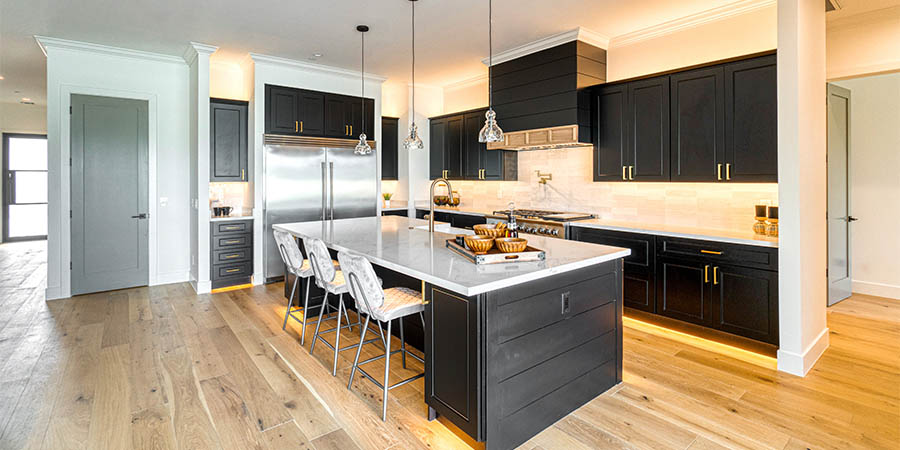Admin15 Jul 2025
DIY Kitchen Budget
DIY Kitchen Budget: How to Plan, Save, and Transform Your Space Without Breaking the Bank Taking on a kitchen makeover yourself can be both thrilling and nerve-wracking. From choosing finishes to coordinating contractors (or going it solo), costs can quickly add up. But with careful planning, smart sourcing, and a splash of creativity, you can craft the heart of your home on a budget. Here’s your roadmap to a wallet-friendly DIY kitchen renovation. 1. Dream Big—Then Work Backwards Before swinging a hammer or ordering cabinets, start with a vision board: Gather Inspiration: Pin styles, color palettes, and layouts you love (Pinterest, home-renovation blogs, Instagram). Set Priorities: Rank must-haves (e.g., extra storage, open shelving) versus nice-to-haves (e.g., high-end waterfall island). Estimate Rough Costs: Use online calculators or cost-per-square-foot guides to ballpark each element. Pro Tip: Allocate 50–60% of your budget to cabinets and countertops, 15–20% to appliances, and the rest to flooring, fixtures, paint, and labor (if any). 2. Establish Your Total Budget—and Stick to It A clear budget is your best defense against “budget creep.” Crunch Your Numbers: Determine what you can realistically spend. Include a 10–15% contingency for unexpected expenses (plumbing surprises, extra materials). Break It Into Categories: Create a simple spreadsheet with line items: cabinetry, hardware, paint, flooring, lighting, tools, and miscellaneous. Track Every Dollar: Use a budgeting app (e.g., Mint, YNAB) or a shared Google Sheet to log estimated vs. actual costs in real time. Action Step: Set up your budget spreadsheet today with at least five categories and your total allowable spend. 3. Save Big with Smart Material Choices Cutting material costs doesn’t mean downgrading aesthetics—it’s all about value engineering. ElementBudget-Friendly OptionSplurge-Worthy UpgradeCountertopsLaminate or butcher blockQuartz or graniteCabinetsStock or semi-customFully custom painted cabinetryBacksplashPeel-and-stick tiles or beadboardHand-laid mosaic tilesFlooringLuxury vinyl plank (LVP)Engineered hardwood Shop Overstock & Clearance: Habitat for Humanity ReStores, local salvage yards, or online marketplaces often have gently used or surplus materials at rock-bottom prices. DIY Finishes: Paint or refinish old cabinets instead of replacing them. A fresh cabinet coat paired with new hardware yields a high-impact result for under $200. 4. Phase Your Renovation Strategically Stretch your dollars by tackling the project over multiple phases: Phase 1 – Cosmetic Refresh: Paint walls and cabinets, swap hardware, install a new faucet. Phase 2 – Functional Upgrades: Replace lighting, lay new flooring, add open shelving. Phase 3 – Major Components: Install countertops, cabinetry, and appliances (or wait for sales). Why Phase? Spreading costs over time lets you save between stages, hunt for deals, and avoid overspending all at once. 5. DIY vs. Professional: Know When to Call in the Pros DIY Tasks Painting walls & cabinets Installing backsplash tiles (especially peel-and-stick) Assembling and hanging stock cabinets Laying vinyl or laminate flooring Pro Skills Recommended Plumbing hookups for sinks & dishwashers Electrical work for new lighting or outlets Custom cabinetry installation Precision countertop templating & installation Money-Saving Tip: You can often hire a handyman or a single-trade contractor for just a few hours to handle the tricky bits, rather than paying a full contractor rate. 6. Hunt for Deals and Rebates Seasonal Sales: Big-box retailers and cabinet showrooms often discount in January (New Year clearance) and late summer (end-of-season). Rebate Programs: Local utility companies sometimes offer rebates for energy-efficient appliances or LED lighting. Bulk Purchases: Buying in larger quantities (e.g., paint gallons, underlayment rolls) can lower per-unit costs. Quick Win: Sign up for store newsletters to get alerts on flash sales and coupon codes. 7. Keep Quality in the Right Places Remember, the goal is longevity, not shortcuts everywhere. Invest in these high-impact, high-use areas: Sink & Faucet: The daily workhorses of your kitchen—opt for quality to avoid leaks and wear. Countertops: A durable surface resists scratches, stains, and heat. Flooring: Spills and foot traffic demand something easy to clean and hard-wearing. You can economize on backsplash tile patterns or trim details without sacrificing the elements you rely on most. 8. Celebrate Your Progress—and Enjoy the Process A kitchen remodel is a marathon, not a sprint: Document Milestones: Post before-and-after snaps to stay motivated. Invite Friends Over: Brag your way through each finish line (new cabinets installed, paint complete) with a DIY pizza night. Learn as You Go: Watch tutorials, join DIY forums, and don’t be afraid to adjust your plan if you discover a smarter solution. Final Thoughts A thoughtfully budgeted DIY kitchen renovation marries creativity with discipline. By setting realistic budgets, sourcing materials smartly, phasing your project, and mixing DIY with professional help where needed, you’ll end up with a beautiful, functional kitchen—and a sense of pride in every dollar well spent. Ready to whip up your dream kitchen on a shoestring budget? Grab that spreadsheet, start hunting for deals, and get your DIY gloves on!








